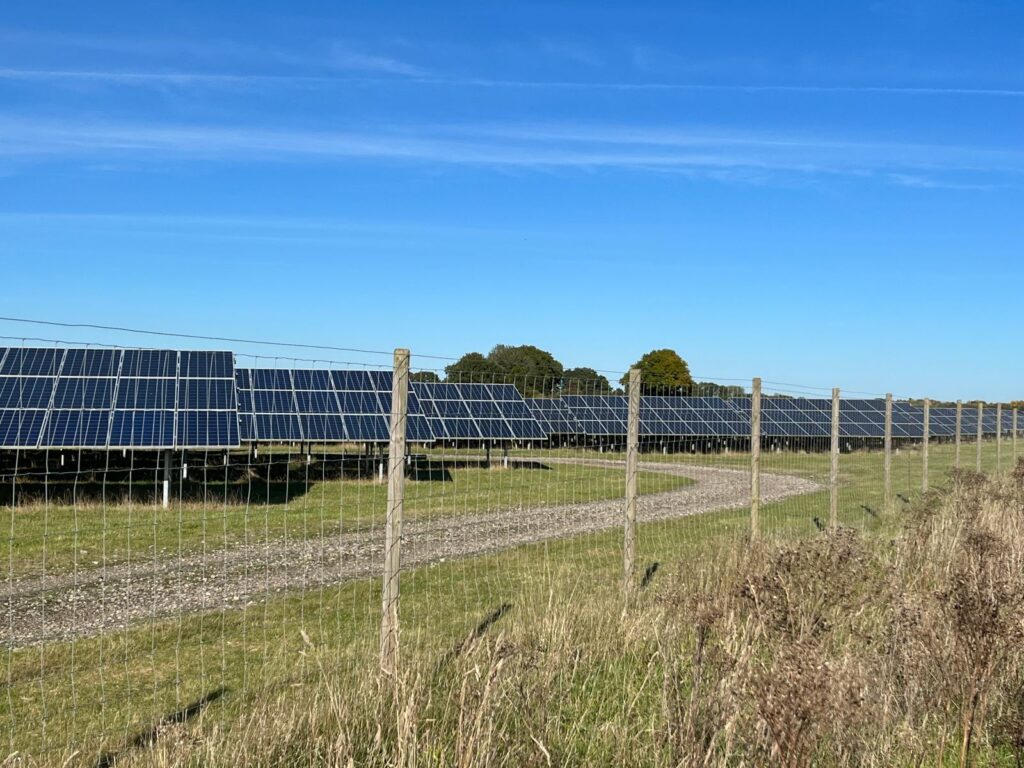Deep Dive with Neil Titley
Our Deep Dive series features technical experts who give you an inside look at how we are solving complex infrastructure challenges for our clients from across the world.
This week, we are highlighting a technical director from our Environment business in the United Kingdom and Ireland, and how he and his team use their skills to deliver nationally significant solar and battery storage projects in the UK.
With over 20 years’ expertise in Environmental Impact Assessments, planning, stakeholder engagement and site design, Neil Titley has been involved in delivering work for a range of sectors, including major energy projects. He has worked on over 40 solar projects and 15 of England and Wales’ Nationally Significant Infrastructure Projects (NSIPs), including Europe’s largest proposed solar project, which will be developed in the UK. Internationally, he has supported several solar projects, notably the delivery of Kazakhstan’s largest solar farm and the first solar farm in the Caribbean.
You’ve delivered numerous solar projects during your career at AECOM. Which stand out to you, and how are they delivering a better world?
As the UK seeks to meet climate targets, developers are turning their sights to solar energy. I’ve had the privilege to contribute to this new push to build out solar farms, and I am proud of our team’s contribution to Net Zero UK.
With aspirations of reaching net zero by 2035, the UK Government’s Energy Security Strategy (April 2022) and The House of Commons Environmental Audit Committee report advises that solar must increase five-fold to 70 gigawatts (GW) by 2035. In the UK, we are seeing an increase in solar farm applications as it becomes commercially more viable. Alongside onshore wind, large-scale solar is now the cheapest new energy generating technology, helping to reduce bills and secure domestic supplies.
There are now many solar projects proposed in the UK that are classified as NSIPs requiring a Development Consent Order (DCO) in accordance with the Planning Act 2008 because of their scale (generating more than 50 megawatts peak electricity).
The solar NSIPs we are working on would generate between 250 megawatts (MW) to 1.5 gigawatts (GW) each and cover hundreds of hectares of land. Meticulous design, planning, permitting and public engagement are therefore critical to their success.
I have been involved in fifteen solar NSIPs now, requiring a multitude of skills, from extensive stakeholder engagement to careful planning and design, to minimise impacts on communities and respect environmental sensitivities such as archaeology and heritage. Not only are these projects helping with the energy transition to greener supplies, but they can also deliver impressive biodiversity net gains.
My most recent solar project achieved around 80 percent gains through the conversion of intensively farmed land to mixed seed grassland under the panels, with areas of hedge and tree planting for screening, which massively exceeds the UK government’s aspiration for projects to achieve a minimum 10 percent biodiversity net gain. This was a result of our ecology team working alongside our landscape specialists to plant native UK species mix in locations where they would help screen views of the project and maximise wildlife enhancement.
What are some key challenges your team faced while delivering these major projects? How did you solve them?
Solar farms are different to many other NSIPs due to their larger scale, greenfield location and often with landowners living local to the site, presenting a variety of challenges. Consultation with stakeholders needs to be approached differently, so my team helps by providing more information earlier than usual on the project to communities.
We also support some landowners with training to enable them to adequately answer the communities’ queries on a day-to-day basis. Environmental surveys required are extensive, but as we have a fully integrated team, we can schedule and coordinate these early to avoid delaying the DCO application.
Protecting nature is paramount — we support the layout of farms with nature positive outcomes in mind, proposing areas of tree planting for screening, hedges, green pathways for large animals such as deer, and locating new pathways for walkers, cyclists and horse riders during operation.
Our involvement in Longfield Solar Farm, for example, a 420-hectare site with battery storage in Essex, UK, has helped the developer reach a minimum 87 percent biodiversity net gain for this project, relative to the existing farmland through extensive planting of trees, hedgerows and grassland, and natural habitat restoration with ecological corridors.
As these solar projects are designed for 40 years of operation, the land can also be used for forms of farming such as grazing sheep and bee keeping. Most importantly, the land is returned to the owners in the same or better condition at the end of the project.
How has AECOM enabled you and your teams to cultivate the expertise needed to deliver solar projects — and future work like it?
AECOM is involved in many of the UK’s large-scale solar NSIPs, including six in the public domain, while supporting several developers to identify suitable sites for solar before preparing a DCO application.
Our multidisciplinary team is currently delivering environmental, planning, stakeholder engagement, land referencing, and layout design services for over 4 GW of solar NSIPs, which include battery storage to provide grid resilience, and over 10GW of solar overall. Some of our recent solar projects in the public domain, all with battery storage, include:
- Sunnica Energy Farm (980-hectares)
- Longfield Solar Farm (420-hectares)
- Gate Burton Energy Park (650-hectares)
- Tillbridge Solar Farm (1,400-hectares)
- East Yorkshire Solar Farm (1,200-hectares)
- Fosse Green Solar Farm (988-hecatres).
As we have extensive experience working across many large-scale projects, we can integrate expertise and identify potential pitfalls early. We also bring a holistic approach as although I work in the early stages of solar projects to navigate the site, planning and environmental processes, our energy experts can carry projects on through to delivery to provide a full end-to-end service, ensuring effective grid connection and supporting the transition to net zero.









